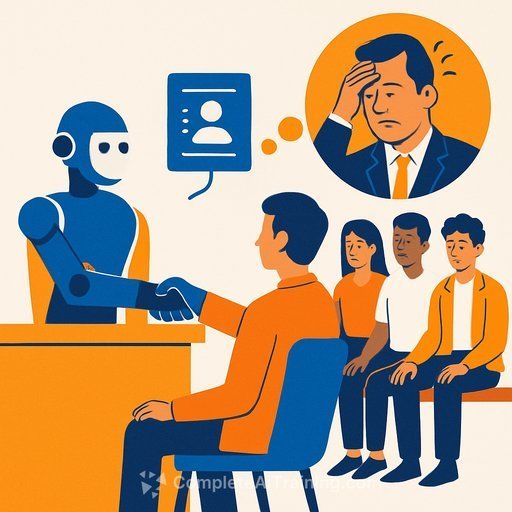Amazon reportedly plans major HR cuts as AI spend accelerates
Amazon is reportedly preparing to trim up to 15% of its human resources workforce as the company ramps investment in artificial intelligence and data infrastructure. Multiple sources told Fortune the People eXperience and Technology (PXT) organization will be heavily affected, with additional cuts expected across parts of the consumer business. The total headcount reduction and timing remain undisclosed. An Amazon spokesperson, Kelly Nantel, declined to comment.
Where the cuts may land
PXT, led by Senior Vice President Beth Galetti, employs more than 10,000 people globally across recruiting, HR operations, and HR tech. Sources indicate recruiting and PXT teams could be among the hardest hit. Insiders describe the move as a continuation of CEO Andy Jassy's effort to streamline after years of overexpansion.
This follows smaller 2025 reductions in consumer devices, Wondery, and AWS, and the ~27,000 corporate roles cut between late 2022 and 2023. Those earlier cuts represented a high single-digit share of Amazon's office-based workforce.
AI as the lever for efficiency
Reports suggest Amazon plans to invest up to $100 billion in AI and cloud infrastructure over the coming year. In a June note to staff, Jassy said automation will be central to the company's reinvention and that employees who lean into AI will have more impact. He also warned these efficiency gains would likely reduce the size of the corporate workforce.
Amazon is known for strict performance management, including set targets for "unregretted attrition." Sources told Fortune the current discussions are separate from that process.
Seasonal hiring continues
While corporate teams brace for cuts, Amazon plans to hire 250,000 seasonal warehouse and logistics workers for the holiday period. This is a reminder that efficiency in corporate roles can coexist with high-volume, time-bound hiring in operations. For HR, it's a two-speed model: lean overhead, flexible frontline.
See Amazon's hourly and seasonal roles
What HR leaders should do now
1) Stabilize workforce plans
- Run scenario plans for 5-15% reductions across HR, recruiting, and shared services.
- Map critical roles and successors; freeze nonessential backfills and contractor spend.
- Model service levels by function (recruiting intake, ER case loads, ticket queues) under reduced headcount.
2) Protect core HR services
- Prioritize payroll, benefits, ER, compliance, and manager support; defer nice-to-have projects.
- Stand up self-service: policy hubs, knowledge bases, and ticket deflection with clear SLAs.
- Create an escalation playbook for sensitive issues and legal risk.
3) Re-skill HR for AI and automation
- Train teams on prompt quality, data literacy, and workflow automation to lift output per FTE.
- Apply AI to req triage, screening augmentation, interview scheduling, document drafting, and case summaries.
- Pilot AI copilots inside HRIS/ATS before expanding; measure time saved and error rates.
Explore AI upskilling paths by job and the latest AI courses to speed adoption.
4) Recruiting: pivot to efficiency and internal mobility
- Tighten hiring approvals; focus on revenue-critical and safety-critical roles.
- Stand up internal marketplaces; redeploy impacted talent before external hires.
- Nurture silver-medalist pools; shift sourcers to talent intelligence and capacity modeling.
5) Performance and manager enablement
- Clarify performance standards and calibration rules; reduce ambiguity that fuels attrition and claims.
- Give managers toolkits: scripts, FAQs, performance documentation templates, and ER guardrails.
- Avoid unmanaged "quiet cuts"; require documentation for decisions that affect employment.
6) Communications that lower anxiety
- Use a weekly cadence with a single source of truth; publish an evolving FAQ.
- Run manager-only briefings 24-48 hours before broad updates; prepare for hard questions.
- Offer support resources (EAP, internal mobility coaching) and set clear timelines.
7) Tech stack and vendor rationalization
- Audit HRIS, ATS, LXP, surveys, and point tools; consolidate where overlap exists.
- Negotiate term reductions and usage-based pricing; cut shelfware.
- Set data governance rules for AI tools to protect PII and IP.
8) Compliance and risk controls
- Check WARN thresholds and notice timing; coordinate with Legal early.
- Standardize selection criteria, severance, and benefits continuation; test for disparate impact.
- Account for works councils, consultation periods, and local laws in non-U.S. regions.
Review U.S. WARN Act requirements
9) DEI, morale, and trust
- Track the impact of reductions by level, function, and demographic group.
- Preserve critical DEI programs that affect retention and legal exposure.
- Measure sentiment weekly; close the loop on feedback with visible actions.
10) Metrics that matter
- Service levels: time-to-first-response and resolution by ticket type.
- Recruiting throughput: req aging, stage conversion, hiring manager satisfaction.
- Risk: ER case volume, substantiation rate, legal claims, and compliance breaches.
- AI impact: hours saved per workflow, error rates, and adoption rates by team.
Signals to watch next
- Official timing and scope of reductions, starting with PXT and recruiting.
- Additional AI buildouts or partnerships that shift headcount needs.
- Hiring freezes, budget reforecasts, and changes to performance targets.
The direction is clear: more automation, leaner corporate teams, and strict prioritization. HR's job is to keep the system stable, re-skill fast, and prove impact with fewer people. The companies that do this well will exit stronger-with simpler processes, clearer standards, and teams trained to use AI every day.
Your membership also unlocks:






